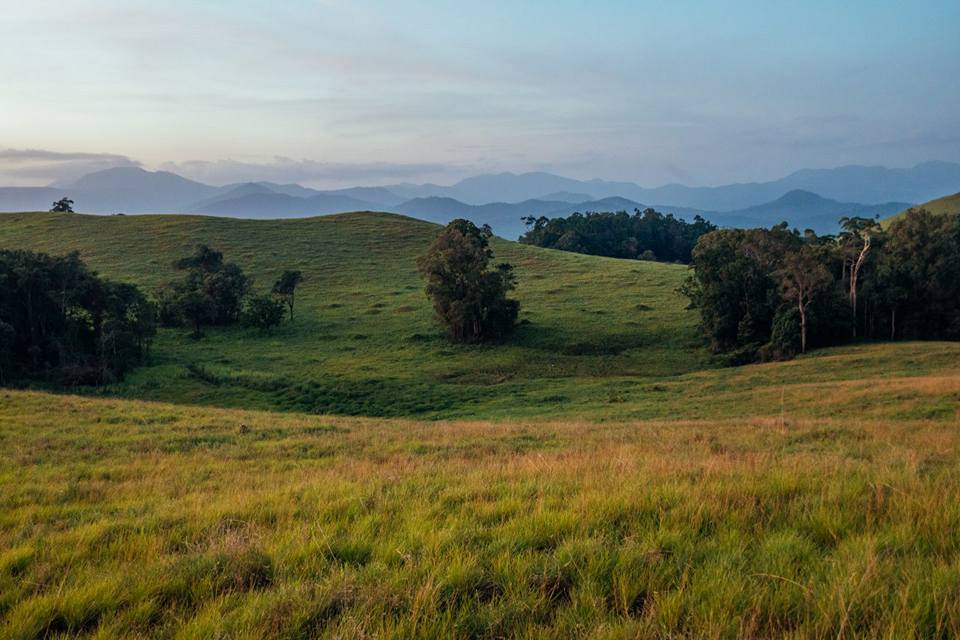រាជរដ្ឋាភិបាលកម្ពុជាបានទទួលស្គាល់សក្ដានុពលនៃឧស្សាហកម្មទេសចរណ៍ថាជាប្រភពនៃកំណើនសេដ្ឋកិច្ច-សង្គមរបស់កម្ពុជា រួមមានការបង្កើតការងារ និងការកាត់បន្ថយភាពក្រីក្រ។ វិស័យទេសចរណ៍ទាំងក្នុងនិងក្រៅប្រទេសត្រូវបានចាត់ទុកថាជាសសរស្តម្ភសេដ្ឋកិច្ចដ៏សំខាន់មួយរបស់កម្ពុជា។ នៅដើមទសវត្សរ៍ឆ្នាំ២០០០ អ្នកទេសចរបរទេសច្រើនជាងគេមកកម្ពុជាគឺជាជនជាតិភាគខាងលិចមកពីសហរដ្ឋអាមេរិក ចក្រភពអង់គ្លេស និងបារាំង។1 ភ្ញៀវទេសចរចិនបានឈរនៅលំដាប់កំពូលក្នុងបញ្ជីការមកដល់កម្ពុជាឆ្នាំ២០១៩ ដែលមានចំនួន ២,៣៦ លាននាក់។2 វាបង្ហាញពីការកើនឡើង ១៨ ភាគរយធៀបនឹងឆ្នាំ២០១៨។ ភ្ញៀវទេសចរចិននៅតែស្ថិតនៅលំដាប់កំពូលសម្រាប់ឆ្នាំ២០២០ បន្ទាប់មកគឺប្រទេសថៃ និងវៀតណាម។3 ការមកដល់របស់ភ្ញៀវទេសចរផ្សេងទៀតគឺមកពីសហរដ្ឋអាមេរិក សាធារណរដ្ឋកូរ៉េ ជប៉ុន បារាំង និងចិនតៃប៉ិ។4 សម្រាប់ការចេញដំណើរទៅក្រៅប្រទេស ប្រទេសកម្ពុជាបានធ្វើដំណើរច្រើនជាងគេទៅកាន់ប្រទេសថៃ (៤២ ភាគរយ) វៀតណាម (៣០ ភាគរយ) តៃវ៉ាន់ (១២ ភាគរយ) ចិន (៥ ភាគរយ) ម៉ាឡេស៊ី (៤ ភាគរយ) និងផ្នែកដទៃផ្សេងទៀតនៃពិភពលោក (៧ ភាគរយ) នៅក្នុងឆ្នាំ២០១៩។5
ក្នុងឆ្នាំ២០១៩ មានភ្ញៀវទេសចរធ្វើដំណើរក្នុងស្រុកប្រមាណ ១១,៣ លាននាក់ និងភ្ញៀវអន្តរជាតិចំនួន ៦,៦១ លាននាក់។6 ក្នុងឆ្នាំ២០២២ កម្ពុជាទទួលបានភ្ញៀវអន្តរជាតិចំនួន២,២លាននាក់ កើន១១ភាគរយធៀបនឹងឆ្នាំមុន។7 ចំណូលពីភ្ញៀវទេសចរអន្តរជាតិធៀបទៅនឹងផលិតផលក្នុងស្រុកសរុបរបស់កម្ពុជាមាន ៩,៤៤ ភាគរយក្នុងឆ្នាំ២០០០។8 ចំនួននេះបានកើនឡើងដល់ ១៩,៦១ ភាគរយក្នុងឆ្នាំ ២០១៩។9 ចំណូលពីភ្ញៀវទេសចរអន្តរជាតិស្មើនឹង ២២៨ លានដុល្លារក្នុងឆ្នាំ២០០០ និង ៤.៩១៩ លានដុល្លារក្នុងឆ្នាំ២០១៩។10 ទោះជាយ៉ាងណាក៏ដោយ ចំនួននេះបានធ្លាក់ចុះយ៉ាងខ្លាំងនៅឆ្នាំ២០២០ ដោយសារពិភពលោកបានជួបប្រទះជាមួយនឹងការធ្វើចត្តាឡីស័ក និងការរឹតបន្តឹងការធ្វើដំណើររបស់មេរោគរាតត្បាតកូវីដ-១៩។ ក្នុងឆ្នាំ២០២០ ចំណូលពីភ្ញៀវទេសចរអន្តរជាតិបានធ្លាក់ចុះ ៣ ដងធៀបនឹងឆ្នាំមុនមកនៅត្រឹមប្រមាណ ១.០២៣ លានដុល្លារអាមេរិក។11
វិស័យទេសចរណ៍បានផ្តល់ការងារដោយផ្ទាល់ដល់កម្មករចំនួន ៦៣០.០០០ នាក់ ដែលក្នុងនោះ ៦០ ភាគរយ ជាស្ត្រីក្នុងឆ្នាំ២០១៩។12 វិស័យនេះគឺស្ថិតនៅលំដាប់ទីពីរបន្ទាប់ពីវិស័យកាត់ដេរដែលមានចំនួនស្ត្រីធ្វើការច្រើនជាងគេ។ បើនិយាយពីសណ្ឋាគារ និងកន្លែងស្នាក់នៅ គិតត្រឹមឆ្នាំ២០២០ កម្ពុជាមានសណ្ឋាគារសរុបចំនួន ១.០២៨ ផ្តល់បន្ទប់ស្នាក់នៅចំនួន ៤៤.៤២៨ បន្ទប់នៅក្នុង ២៥ ខេត្តក្រុងទូទាំងប្រទេសកម្ពុជា។13 ប្រភេទកន្លែងស្នាក់នៅមួយទៀតគឺផ្ទះសំណាក់ ដែលមានចំនួន ២.៧៥៥ ចែកជា ៣៥.៧៩១ បន្ទប់សម្រាប់ភ្ញៀវទេសចរ។14 ដោយសារឧស្សាហកម្មទេសចរណ៍រីកចម្រើន និងតម្រូវការកន្លែងស្នាក់នៅកើនឡើងពីមួយឆ្នាំទៅមួយឆ្នាំ ចំនួនសណ្ឋាគារ និងផ្ទះសំណាក់ក៏កើនឡើងផងដែរ។ នៅឆ្នាំ១៩៩៨ មានសណ្ឋាគារតែ ២១៦ និងផ្ទះសំណាក់ ១៤៧ ប៉ុណ្ណោះ។ វាបង្ហាញពីអត្រាកំណើន ៣៨៦ ភាគរយ សម្រាប់សណ្ឋាគារ និង ១.៧៤០ ភាគរយ សម្រាប់ផ្ទះសំណាក់។15
គោលដៅទេសចរណ៍ល្បីជាងគេរបស់កម្ពុជា គឺឧទ្យានបុរាណវិទ្យាអង្គរ ក្នុងខេត្តសៀមរាប។ ឧទ្យាននេះគ្របដណ្តប់លើផ្ទៃដី ៤០០ គីឡូម៉ែត្រការ៉េ និងមានតំបន់ព្រៃឈើ និងប្រាសាទបុរាណជាច្រើន។ ឧទ្យានបុរាណវិទ្យាអង្គមានប្រាសាទអង្គរវត្ត ដែលជាប្រាសាទសាសនាដ៏ធំបំផុតក្នុងពិភពលោក។ ប្រាសាទនេះត្រូវបានចុះក្នុងបញ្ជីបេតិកភណ្ឌពិភពលោករបស់អង្គការយូណេស្កូក្នុងឆ្នាំ១៩៩២។16 ប្រាសាទអង្គរវត្ត និងប្រាសាទផ្សេងៗទៀតនៅក្នុងឧទ្យានបុរាណវិទ្យាអង្គរបានរកចំណូលបានរាប់លានដុល្លារ និងទាក់ទាញអ្នកធ្វើដំណើរក្នុងស្រុក និងអន្តរជាតិរាប់លាននាក់ក្នុងមួយឆ្នាំៗ។ ក្នុងឆ្នាំ២០១៩ ប្រាសាទអង្គរវត្តបានទាក់ទាញភ្ញៀវទេសចរអន្តរជាតិប្រមាណ ២,២ លាននាក់ បង្កើតប្រាក់ចំណូលបាន ៩៩ លានដុល្លារអាមេរិក តាមរយៈការលក់សំបុត្រ។17 គោលដៅទេសចរណ៍ពេញនិយមផ្សេងទៀតគឺតំបន់ឆ្នេរ (ខេត្តព្រះសីហនុ កោះរ៉ុង កែប កោះកុង និងកំពត) តំបន់ភ្នំ (បាត់ដំបង រតនគិរី មណ្ឌលគិរី ពោធិ៍សាត់) និងតំបន់ទេសចរណ៍ធម្មជាតិដែលរីករាលដាលពាសពេញប្រទេស។
អេកូទេសចរណ៍ និងសហគមន៍ទេសចរណ៍ (CBET) នៅកម្ពុជា
អង្គការសហប្រជាជាតិកំណត់និយមន័យអេកូទេសចរណ៍ថាជា “ទម្រង់ទេសចរណ៍ធម្មជាតិទាំងអស់ ដែលការលើកទឹកចិត្តចម្បងរបស់ភ្ញៀវគឺការសង្កេត និងការឱ្យតម្លៃនៃធម្មជាតិ ក៏ដូចជាវប្បធម៌ប្រពៃណីដែលកើតមាននៅក្នុងតំបន់ធម្មជាតិ”។18 ខណៈពេលដែលសហគមន៍ទេសចរណ៍ធម្មជាតិមានការចូលរួមពីសហគមន៍មូលដ្ឋាន និងការគ្រប់គ្រងធនធានធម្មជាតិដោយផ្ទាល់ ដែលពួកគេនឹងទទួលបានអត្ថប្រយោជន៍ដោយផ្ទាល់តាមរយៈសកម្មភាពទេសចរណ៍ធម្មជាតិនៅក្នុងតំបន់របស់ពួកគេ។19 ទេសចរណ៍ធម្មជាតិតាមសហគមន៍បង្កើតផលចំណេញសម្រាប់មូលដ្ឋាន មិនត្រឹមតែបុណ្ណោះវាក៏ជួយថែរក្សាធនធានធម្មជាតិ និងបរិស្ថានផងដែរ។ សម្រាប់ប្រទេសដែលសម្បូរទៅដោយទេសភាពធម្មជាតិ និងភាពទាក់ទាញ កម្ពុជាមានសក្ដានុពលក្នុងការអភិវឌ្ឍអេកូទេសចរណ៍។20
ក្នុងមួយទសវត្សរ៍ចុងក្រោយនេះ អេកូទេសចរណ៍ធម្មជាតិមានការរីកចម្រើនយ៉ាងឆាប់រហ័ស។ មូលហេតុចម្បងនៃការផ្លាស់ប្តូរនេះគឺដោយសារការផ្តល់អាទិភាពរបស់រដ្ឋាភិបាលក្នុងការធ្វើពិពិធកម្មវិស័យទេសចរណ៏ និងតម្រូវការសម្រាប់វិស័យទេសចរណ៍ប្រកបដោយនិរន្តរភាព។ នៅឆ្នាំ២០១៧ ក្រុមការងារអេកូទេសចរណ៍អន្តរក្រសួងត្រូវបានបង្កើតឡើងដើម្បីគ្រប់គ្រង និងអភិវឌ្ឍសហគមន៍ដែលមានសក្តានុពលលើវិស័យទេសចរណ៍នៅកម្ពុជា។21 លើសពីនេះទៀត នៅឆ្នាំ២០២១ ដោយផ្អែកលើភាពជោគជ័យរបស់ក្រុមការងារអន្តរក្រសួង គណៈកម្មាធិការជាតិគ្រប់គ្រង និងអភិវឌ្ឍន៍សហគមន៏ទេសចរណ៍ និងអេកូទេសចរណ៍ (NCDCBE) ត្រូវបានបង្កើតឡើង។22

ឧទ្យានជាតិវីរៈជ័យ ក្នុងខេត្តរតនគិរី ប្រទេសកម្ពុជា។ រូបភាពយកចេញពីគេហទំព័រ Facebook ផ្លូវការរបស់ក្រសួងបរិស្ថាន នៅថ្ងៃទី០៥ ខែតុលា ឆ្នាំ២០១៧។
គិតត្រឹមឆ្នាំ២០១៩ ក្រសួងទេសចរណ៍បានបញ្ជាក់ថា មានតំបន់អេកូទេសចរណ៍ប្រមាណ ២៦៦ កន្លែង ដែលក្នុងនោះមាន១៣ ជាតំបន់សហគមន៍ទេសចរណ៍ធម្មជាតិដែលកំពុងដំណើរការនៅទូទាំងប្រទេសកម្ពុជា។23 ក្នុងឆ្នាំ២០១៩ អេកូទេសចរណ៍ធម្មជាតិបានទទួលភ្ញៀវទេសចរប្រមាណ ១៦ ភាគរយនៃចំនួនភ្ញៀវទេសចរសរុបនៅកម្ពុជា។24 ចំនួននេះបានកើនឡើងក្នុងអំឡុងពេលជំងឺរាតត្បាតកូវីដ-១៩ ដោយសារតម្រូវការទេសចរណ៍ក្នុងស្រុកកើនឡើង ដោយសារការរឹតបន្តឹងការធ្វើដំណើរអន្តរជាតិ។25 ជាមួយគ្នានេះ ក្រសួងកសិកម្មបានកំណត់សហគមន៍កសិកម្មចំនួន ១៣១ សហគមន៍ដែលមានសក្តានុពលក្នុងការបំប្លែងទៅជាសហគមន៍ទេសចរណ៍ធម្មជាតិ ដែលអាចលើកកម្ពស់ជីវភាពរស់នៅរបស់ប្រជាជននៅមូលដ្ឋាន។26
ដោយសហការជាមួយធនាគារពិភពលោក ក្រសួងបរិស្ថានបានអនុវត្តគម្រោងនិរន្តភាពតំបន់ទេសភាព និងទេសចរណ៍ធម្មជាតិកម្ពុជា (CSLEP) ក្នុងឆ្នាំ២០១៩។ គម្រោងនេះមានតម្លៃ ៥០.៦៦ លានដុល្លារអាមេរិក មានគោលបំណងលើកកម្ពស់វិស័យទេសចរណ៍ធម្មជាតិ និងអនុផលព្រៃឈើនៅតំបន់ភ្នំក្រវាញ និងទេសភាពទន្លេសាប ដែលពួកគេកំណត់ថាជាតំបន់សក្តានុពលសម្រាប់ការអភិវឌ្ឍន៍សហគមន៍ទេសចរណ៍ធម្មជាតិមានដូចជា ខេត្តកោះកុង ខេត្តសៀមរាប និងតំបន់ការពារភ្នំឱរ៉ាល់។27 ក្រោមគម្រោង CLSEP ក្របខ័ណ្ឌផ្សេងៗត្រូវបានដាក់ចេញប្រើប្រាស់រួមមាន ក្របខណ្ឌដំណើរការគ្រប់គ្រងសុវត្ថិភាពសង្គមនៃគម្រោងនិរន្តភាពតំបន់ទេសភាព និងទេសចរណ៍ធម្មជាតិកម្ពុជា ក្របខ័ណ្ឌផែនការសម្រាប់ជនជាតិដើមភាគតិចនៃគម្រោងនិរន្តភាពតំបន់ទេសភាព និងទេសចរណ៍ធម្មជាតិកម្ពុជា និងក្របខណ្ឌគោលនយោបាយស្តីពីការដោះស្រាយផលប៉ះពាល់នៃគម្រោងនិរន្តភាពតំបន់ទេសភាព និងទេសចរណ៍ធម្មជាតិកម្ពុជា។
វិស័យទេសចរណ៍ក្នុងបរិបទនៃការរាតត្បាតនៃជំងឺកូវីដ-១៩
ដោយមានវិស័យទេសចរណ៍ជាប្រភពចំណូលដ៏សំខាន់មួយរបស់ប្រទេស កម្ពុជាទទួលរងផលប៉ះពាល់ពីជំងឺកូវីដ-១៩។ នៅពេលចាប់ផ្តើមនៃជំងឺរាតត្បាត វិស័យទេសចរណ៍បានរងផលប៉ះពាល់យ៉ាងខ្លាំង។ មូលហេតុចម្បងគឺមកពីការរឹតបន្តឹងការធ្វើដំណើរដែលរារាំងភ្ញៀវទេសចរបរទេសមិនឱ្យធ្វើដំណើរ។28 ភ្ញៀវបរទេសដែលមកទស្សនាកម្ពុជាបានធ្លាក់ចុះយ៉ាងខ្លាំងពី ៦,៦១ លាននាក់ក្នុងឆ្នាំ២០១៩ មក ១,៣ លាននាក់ក្នុងឆ្នាំ២០២០។29 តាមការប៉ាន់ប្រមាណថា កម្ពុជាបានបាត់បង់ចំណូលទេសចរណ៍ ៣ ពាន់លានដុល្លារ ដោយសារជំងឺរាតត្បាតកូវីដ-១៩។30
ក្នុងឆ្នាំ២០២០ ការងារទាក់ទងនឹងទេសចរណ៍បានថយចុះ ២១.៧ ភាគរយធៀបនឹងឆ្នាំមុន។31 វាស្មើនឹង ២,៣៣ លានការងារក្នុងឆ្នាំ២០១៩ ដល់ ១,៨២ លានក្នុងឆ្នាំ២០២០។32 គិតត្រឹមខែកញ្ញា ឆ្នាំ២០២០ ក្រសួងទេសចរណ៍បានរាយការណ៍ថា អាជីវកម្មទាក់ទងនឹងទេសចរណ៍ប្រហែល ៣០០០ ត្រូវបានបិទ ឬផ្អាក។33 អាជីវកម្មដែលរងផលប៉ះពាល់ប្រហែល ៦២ ភាគរយ មានមូលដ្ឋាននៅក្នុងខេត្តសៀមរាប ដោយបង្ខំកម្មករជិត ១៥,០០០ នាក់ចេញពីការងារ។34 បុគ្គលិកដែលត្រូវបានព្យួរការងារ ឬបញ្ឈប់ការងារភាគច្រើនងាកមករកវិស័យកសិកម្ម ដើម្បីផ្គត់ផ្គង់ប្រាក់ចំណូលប្រចាំថ្ងៃ។
រដ្ឋាភិបាលបានផ្តួចផ្តើមការឆ្លើយតបរយៈពេលវែង និងរយៈពេលខ្លីផ្សេងៗ ដើម្បីស្តាឧស្សាហកម្មទេសចរណ៍ឡើងវិញ។ វិធានការទាំងនោះរួមមានការលើកលែងពន្ធ/ថ្លៃសេវា និងការឧបត្ថម្ភជាសាច់ប្រាក់/កម្ចីសម្រាប់អាជីវកម្ម និងសហគ្រាសដែលទាក់ទងនឹងទេសចរណ៍ យុទ្ធនាការចាក់ថ្នាំបង្ការ និងការអភិវឌ្ឍន៍សមត្ថភាពសម្រាប់បុគ្គលិកក្នុងវិស័យទេសចរណ៍ និងការអភិវឌ្ឍន៍ហេដ្ឋារចនាសម្ព័ន្ធ។ ជាឧទាហរណ៍ នៅខែកុម្ភៈ ឆ្នាំ២០២០ គោលនយោបាយស្តីពីការលើកលែងពន្ធប្រចាំខែសម្រាប់សណ្ឋាគារ និងផ្ទះសំណាក់ទាំងអស់ក្នុងខេត្តសៀមរាបត្រូវបានអនុវត្ត។ គោលនយោបាយលើកលែងពន្ធសម្រាប់ការស្នាក់នៅទាក់ទងនឹងទេសចរណ៍នេះត្រូវបានពន្យាពេលរហូតដល់ខែមីនា ឆ្នាំ២០២៣។ លើសពីនេះ នៅខែឧសភា ឆ្នាំ២០២២ រដ្ឋាភិបាលបានដាក់ឱ្យដំណើរការគម្រោងសហហិរញ្ញប្បទានស្តារ និងជំរុញកំណើនក្នុងវិស័យទេសចរណ៍ (TRCS) មានទឹកប្រាក់ចំនួន ១៥០ លានដុល្លារអាមេរិក ដែលមកពីការរួមចំណែករបស់រាជរដ្ឋាភិបាលកម្ពុជាចំនួន ៧៥ លានដុល្លារ តាមរយៈធនាគារសហគ្រាសធុនតូច និងមធ្យមនៃកម្ពុជា និងស្ថាប័នហិរញ្ញវត្ថុដែលចូលរួម (PFIs) វិភាគទានចំនួន ៧៥ លានដុល្លារ។ សហគ្រាសក្នុងវិស័យទេសចរណ៍ដែលរងផលប៉ះពាល់ដោយវិបត្តិកូវីដ-១៩ អាចស្នើសុំកម្ចីពីស្ថាប័នហិរញ្ញវត្ថុដែលចូលរួមដែលជាដៃគូរបស់ធនាគារសហគ្រាសធុនតូច និងមធ្យមនៃកម្ពុជាក្នុងអត្រាការប្រាក់សម្បទាន។
រដ្ឋាភិបាលបានអនុវត្តផែនទីបង្ហាញផ្លូវសម្រាប់ការស្តារវិស័យទេសចរណ៍កម្ពុជាក្នុងអំឡុងពេល និងក្រោយកូវីដ-១៩។ ផែនទីបង្ហាញផ្លូវគឺជាគោលការណ៍ណែនាំដ៏ទូលំទូលាយដែលមានគោលបំណងពង្រឹងវិស័យទេសចរណ៍ក្នុងអំឡុងពេលក្រោយការរីករាលដាលនៃជំងឺកូវីដ-១៩ កាត់បន្ថយផលប៉ះពាល់អវិជ្ជមាននៃជំងឺរាតត្បាត និងលើកកម្ពស់កិត្យានុភាព និងទេសចរណ៍របស់កម្ពុជាជាគោលដៅសុវត្ថិភាពសម្រាប់ក្រោយការរាតត្បាត។ ផែនទីបង្ហាញផ្លូវមានបីដំណាក់កាលនៃការស្តារឡើងវិញដូចជា៖
- ដំណាក់កាលទី ១៖ ការគ្រប់គ្រងវិបត្តិក្នុងដំណាក់កាលធម្មតាថ្មី និងផែនការស្តារឡើងវិញ (២០២០-២០២១)
- ដំណាក់កាលទី ២៖ ការស្តារឡើងវិញនូវវិស័យទេសចរណ៍នៅកម្ពុជាក្រោយការរីករាលដាលនៃមេរោគកូវីដ (២០២២-២០២៣)
- ដំណាក់កាលទី ៣៖ ការរៀបចំសម្រាប់អនាគតថ្មីនៃវិស័យទេសចរណ៍នៅកម្ពុជា (២០២៤-២០២៥)។
បញ្ហាប្រឈម និងដំណើរឆ្ពោះទៅមុខ
ទោះបីជាទទួលបានភ្ញៀវទេសចរអន្តរជាតិយ៉ាងច្រើនពីមួយឆ្នាំទៅមួយឆ្នាំក៏ដោយ ក៏វិស័យទេសចរណ៍របស់កម្ពុជានៅតែមានកន្លែងសម្រាប់កែលម្អ និងទាញយកសក្តានុពល។ ដោយការពឹងផ្អែកយ៉ាងខ្លាំងលើប្រាសាទអង្គរវត្តជាតំបន់ទេសចរណ៍សំខាន់ វាបានធ្វើឱ្យវិស័យទេសចរណ៍របស់ប្រទេសកម្ពជាងាយរងគ្រោះទៅនឹងបញ្ហាពីខាងក្រៅ។ ជាឧទាហរណ៍ ជំងឺរាតត្បាតកូវីដ-១៩ បានបង្ហាញឱ្យឃើញទិដ្ឋភាពជាក់ស្តែងសម្រាប់វិស័យទេសចរណ៍កម្ពុជា។ ការរឹតបន្តឹងការធ្វើដំណើរ និងការបិទច្រកព្រំដែន ជះឥទ្ធិពលអវិជ្ជមានដល់អាជីវកម្មពាក់ព័ន្ធទេសចរណ៍ទាំងអស់ ជាពិសេសនៅក្នុងខេត្តដែលជំរុញដោយទេសចរណ៍ ដូចជាខេត្តសៀមរាប និងខេត្តព្រះសីហនុ។
ជម្រើសគោលដៅទេសចរណ៏មានកំណត់ក៏ជាបញ្ហាដែរ។ កម្ពុជាចាំបាច់ត្រូវធ្វើពិពិធកម្មវិស័យទេសចរណ៍ ដើម្បីរក្សារយៈពេលនៃការស្នាក់នៅជាមធ្យមរបស់ភ្ញៀវទេសចរឱ្យនៅខ្ពស់។ ក្នុងឆ្នាំ២០១៨ រយៈពេលជាមធ្យមនៃការស្នាក់នៅរបស់ភ្ញៀវទេសចរអន្តរជាតិគឺ ៧ ថ្ងៃ ដែលមានរយៈពេលមួយថ្ងៃខ្លីជាងឆ្នាំ១៩៩៥។35 ជាធម្មតា ការស្នាក់នៅយូរមានន័យថាចំណាយកាន់តែច្រើន ដូច្នេះក៏អាចបង្កើតប្រាក់ចំណូលកាន់តែច្រើនសម្រាប់វិស័យនេះផងដែរ។ ការធ្វើពិពិធកម្មវិស័យទេសចរណ៍ឱ្យលើសពីការទស្សនាប្រាសាទនឹងទាក់ទាញភ្ញៀវទេសចរឱ្យស្នាក់នៅបានយូរព្រោះវាផ្តល់ជម្រើសកាន់តែច្រើនសម្រាប់ពួកគេក្នុងការកំសាន្ត។ រដ្ឋាភិបាលបានទទួលស្គាល់អេកូទេសចរណ៍ជាដំណោះស្រាយមួយក្នុងការធ្វើពិពិធកម្មឧស្សាហកម្មទេសចរណ៍។ លើសពីនេះ តំបន់សម្រាប់ធ្វើពិពិធកម្មទេសចរណ៍ គឺតំបន់ឆ្នេរ តំបន់ភាគឦសាន និងតំបន់ទេសភាពធម្មជាតិ ដូចជា ទន្លេសាប ទន្លេមេគង្គ និងទន្លេបាសាក់។
បញ្ហាមួយទៀតដែលទាក់ទងនឹងវិស័យទេសចរណ៍របស់កម្ពុជា គឺបញ្ហាហេដ្ឋារចនាសម្ព័ន្ធ និងការដឹកជញ្ជូននៅមានកម្រិត។36 ហេដ្ឋារចនាសម្ព័ន្ធ និងការដឹកជញ្ជូននៅក្នុងតំបន់ផ្សេងទៀត ក្រៅពីគោលដៅអន្តរជាតិដ៏ពេញនិយម តែងតែមានគុណភាពអន់ និងមិនសូវមានការអភិវឌ្ឍន៍។ ផ្លូវថ្នល់ បណ្តាញតភ្ជាប់ អគ្គិសនី ទឹកស្អាត និងអនាម័យនៅតំបន់ទេសចរណ៍ដាច់ស្រយាលអាចនឹងមិនបំពេញតម្រូវចិត្តរបស់ភ្ងៀវទេសចរ។37 ការដាក់អនុវត្តនូវផែនការមេអភិវឌ្ឍន៍វិស័យទេសចរណ៍ខេត្តសៀមរាប ឆ្នាំ២០២១-២០៣៥ ផែនការមេអភិវឌ្ឍន៍វិស័យទេសចរណ៍ខេត្តមណ្ឌលគិរី ឆ្នាំ២០២១-២០៣៥ ផ្លូវល្បឿនលឿនភ្នំពេញ-ព្រះសីហនុ អាកាសយានដ្ឋានអន្តរជាតិសៀមរាបថ្មី គឺជាការព្យាយាមរបស់រដ្ឋាភិបាលក្នុងការលើកកម្ពស់ និងធ្វើពិពិធកម្មវិស័យនេះ តាមរយៈការអភិវឌ្ឍហេដ្ឋារចនាសម្ព័ន្ធ និងការតភ្ជាប់។
សម្រាប់ឆ្នាំ២០២៣ រដ្ឋាភិបាលកម្ពុជាបានព្យាករថានឹងទទួលបានភ្ញៀវទេសចរអន្តរជាតិចំនួន ៤ លាននាក់ ដែលផ្តល់នូវទិដ្ឋភាពវិជ្ជមានសម្រាប់ការស្តារឡើងវិញក្រោយជំងឺកូវីដ-១៩ នៅក្នុងវិស័យទេសចរណ៍។38 វិស័យនេះអាចរកចំណូលបាន ៤ ពាន់លានដុល្លារសម្រាប់ប្រទេស។39
ទាក់ទងនឺងទេសចរណ៍
ឯកសារយោង
- 1. Perter Varga,”ប្រាសាទអង្គរវត្ត៖ ផលប៉ះពាល់នៃវិស័យទេសចរណ៍ខ្នាតធំ,” EHL insight, បានចូលអាននៅខែមករា ឆ្នាំ២០២៣។
- 2. បុគ្គលិក ខ្មែរថាមស៍, “ប្រទេសចិនក្លាយជាប្រទេសភ្ញៀវទេសចរកំពូលក្នុងឆ្នា ២០១៩,” កាសែតខ្មែរថាមស៍,ខែកុម្ភៈ ឆ្នាំ២០២០, បានចូលអាននៅខែមករា ឆ្នាំ២០២៣។
- 3. ក្រសួងទេសចរណ៍, “របាយការណ៍ស្ថិតិទេសចរណ៍ខែធ្នូ ឆ្នាំ ២០២០,” ខែធ្នូ ឆ្នាំ២០២០, បានចូលអាននៅខែមករា ឆ្នាំ២០២៣។
- 4. ដូចឯកសារយោងខាងដើម។
- 5. ក្រុមប្រឹក្សាទេសចរណ៍ពិភពលោក, “ការស្រាវជ្រាវប្រចាំឆ្នាំ២០២២៖ ចំណុចសំខាន់ៗ,” ឆ្នាំ ២០២២, បានចូលអាននៅខែមករា ឆ្នាំ២០២៣។
- 6. ក្រុមសំរបសំរួលការទូតសេដ្ឋកិច្ច, “កម្រងប៉ាណ្ណូបរិធាន ស្តីពីប្រទេសកម្ពុជា,” ក្រសួងការបរទេស និងសហប្រតិបត្តិការអន្តរជាតិ, ខែវិច្ឆិកា ឆ្នាំ២០២១, បានចូលអាននៅខែមករា ឆ្នាំ២០២៣។
- 7. ហ៊ឹន ពិសី, “ភ្ញៀវអន្តរជាតិឡើងដល់កំពូល ២.២លាននាក់ ក្នុងឆ្នាំ២០២២ បង្កើនក្តីសង្ឃឹមឆ្នាំ២០២៣,” កាសែតភ្នំពេញប៉ុស្តិ៍, ខែមករា ឆ្នាំ២០២៣, បានចូលអាននៅខែមករា ឆ្នាំ២០២៣។
- 8. សេដ្ឋកិច្ចសកល, “ប្រៀបធៀបប្រទេសដែលមានទិន្នន័យប្រចាំឆ្នាំពីប្រភពផ្លូវការ,” បានចូលអាននៅខែមករា ឆ្នាំ២០២៣។
- 9. ដូចឯកសារយោងខាងដើម។
- 10. ក្រសួងទេសចរណ៍, “របាយការណ៍ស្ថិតិទេសចរណ៍ខែកុម្ភៈ ឆ្នាំ ២០២២,” ខែកុម្ភៈ ឆ្នាំ២០២២, បានចូលអាននៅខែមករា ឆ្នាំ២០២៣។
- 11. ដូចឯកសារយោងខាងដើម។
- 12. ធនាគារអភិវឌ្ឍន៍អាស៊ី, “សេចក្តីសង្ខេបការវាយតម្លៃតាមវិស័យ៖ ទេសចរណ៍នៅកម្ពុជា,” គម្រោងស្តារឡើងវិញនូវសហគមន៍ទេសចរណ៍ពីកូវីដ-១៩, ខែមករា ឆ្នាំ២០២២, បានចូលអាននៅខែមករា ឆ្នាំ២០២៣។
- 13. ក្រុមសំរបសំរួលការទូតសេដ្ឋកិច្ច, “កម្រងប៉ាណ្ណូបរិធាន ស្តីពីប្រទេសកម្ពុជា,” ក្រសួងការបរទេស និងសហប្រតិបត្តិការអន្តរជាតិ, ខែវិច្ឆិកា ឆ្នាំ២០២១,បានចូលអាននៅខែមករា ឆ្នាំ២០២៣។
- 14. ដូចឯកសារយោងខាងដើម។
- 15. ដូចឯកសារយោងខាងដើម។
- 16. អង្គការយូណេស្កូ, “សេចក្តីថ្លែងការណ៍របស់អង្គការយូណេស្កូ ស្តីពីគម្រោងសាងសង់ដែលបានរាយការណ៍នៅជិតតំបន់បេតិកភណ្ឌពិភពលោកអង្គរនៅកម្ពុជា,” ខែកុម្ភៈ ឆ្នាំ២០២១, បានចូលអាននៅខែមករា ឆ្នាំ២០២៣។
- 17. បុគ្គលិក ខ្មែរថាមស៍, “អង្គរដ៏ល្បីរបស់កម្ពុជា ឃើញភ្ញៀវទេសចរអន្តរជាតិជាង ៤៥,០០០ នាក់ក្នុងរយៈពេល ៥ ខែដំបូង,” កាសែតខ្មែរថាមស៍, ខែមិថុនា ឆ្នាំ២០២២, បានចូលអាននៅខែមករា ឆ្នាំ២០២៣។
- 18. អង្គការទេសចរណ៍ពិភពលោករបស់អង្គការសហប្រជាជាតិ, “ទេសចរណ៍ធម្មជាតិ និងតំបន់ការពារ,” បានចូលអាននៅខែមករា ឆ្នាំ២០២៣។
- 19. ផី ស៊ីផាន់ណារ៉ា, “ទិដ្ឋភាពទូទៅនៃទេសចរណ៍ធម្មជាតិតាមសហគមន៍សម្រាប់ការអភិវឌ្ឍប្រកបដោយចីរភាពនៅកម្ពុជា,” ខែកញ្ញា ឆ្នាំ២០១៩, បានចូលអាននៅខែមករា ឆ្នាំ២០២៣។
- 20. OECD, “កំណត់សម្គាល់ប្រទេសគោលនយោបាយរចនាសម្ព័ន្ធ៖ កម្ពុជា,” ទស្សនវិស័យសេដ្ឋកិច្ចសម្រាប់អាស៊ីអាគ្នេយ៍ ចិន ឥណ្ឌា ឆ្នាំ ២០១៩៖ ឆ្ពោះទៅរកការដឹកជញ្ជូនក្នុងទីក្រុងឆ្លាតវៃ, ខែធ្នូ ឆ្នាំ២០១៩, បានចូលអាននៅខែមករា ឆ្នាំ២០២៣។
- 21. បុគ្គលិកភ្នំពេញប៉ុស្តិ៍, “ហ៊ុន សែន យល់ព្រមដល់ការបង្កើតក្រុមការងារអេកូទេសចរណ៍,” ខែវិច្ឆិកា ឆ្នាំ ២០១៧, បានចូលអាននៅខែមករា ឆ្នាំ២០២៣។
- 22. ទីន សុខថាវុធ, “រដ្ឋាភិបាលបញ្ជាបង្កើត NCDCBE ដើម្បីជំរុញវិស័យទេសចរណ៍,” ខែតុលា ឆ្នាំ២០២១, បានចូលអាននៅខែមករា ឆ្នាំ២០២៣។
- 23. ផី ស៊ីផាន់ណារ៉ា, “ទិដ្ឋភាពទូទៅនៃទេសចរណ៍ធម្មជាតិតាមសហគមន៍សម្រាប់ការអភិវឌ្ឍប្រកបដោយចីរភាពនៅកម្ពុជា,” ខែកញ្ញា ឆ្នាំ២០១៩, បានចូលអាននៅខែមករា ឆ្នាំ២០២៣។
- 24. Rawlins, et al, “បើកដំណើរការការអភិវឌ្ឍន៍អេកូទេសចរណ៍នៅកម្ពុជា,” ធនាគារពិភពលោក, ឆ្នាំ ២០២០, បានចូលអាននៅខែមករា ឆ្នាំ២០២៣។
- 25. សុក សិទ្ធិការ្យ,”គម្រោងទេសចរណ៍ធម្មជាតិតូចៗចំនួន ៣០៧ ត្រូវបានអនុម័តក្នុងខែកញ្ញា,” កាសែតខ្មែរថាមស៍, ខែតុលា ឆ្នាំ២០២២, បានចូលអាននៅខែមករា ឆ្នាំ២០២៣។
- 26. បុគ្គលិក ខ្មែរថាមស៍, “ក្រសួងកំណត់សហគមន៍អេកូទេសចរណ៍សក្តានុពលចំនួន ១៣១,” កាសែតខ្មែរថាមស៍, ខែកក្កដា ឆ្នាំ២០២២, បានចូលអាននៅខែមករា ឆ្នាំ២០២៣។
- 27.
ក្រសួងបរិស្ថាន, “គម្រោងទេសភាព និងអេកូទេសចរណ៍ប្រកបដោយនិរន្តរភាពកម្ពុជា,” ខែកុម្ភៈ ឆ្នាំ២០២០, បានចូលអាននៅខែមករា ឆ្នាំ២០២៣។ - 28. ងីន ចន្ទ័រិទ្ធ, “កូវីដ-១៩ និងវិស័យទេសចរណ៍នៅកម្ពុជា៖ ផលប៉ះពាល់ ការឆ្លើយតប និងផ្លូវឆ្ពោះទៅរកការស្តារឡើងវិញ,” ឆ្នាំ ២០២២, បានចូលអាននៅខែមករា ឆ្នាំ២០២៣។
- 29. ដូចឯកសារយោងខាងដើម។
- 30. ក្រសួងទេសចរណ៍, “ផែនទីផ្លូវសម្រាប់ការស្តារទេសចរណ៍កម្ពុជាក្នុងអំឡុង និងក្រោយជំងឺកូវីដ-១៩,” ឆ្នាំ២០២១, បានចូលអាននៅខែមករា ឆ្នាំ២០២៣។
- 31. ]ក្រុមប្រឹក្សាទេសចរណ៍ពិភពលោក, “ការស្រាវជ្រាវប្រចាំឆ្នាំ២០២២៖ ចំណុចសំខាន់ៗ,” ឆ្នាំ ២០២២, បានចូលអាននៅខែមករា ឆ្នាំ២០២៣។
- 32. ដូចឯកសារយោងខាងដើម។
- 33. បុគ្គលិក ខ្មែរថាមស៍,”ការងារលើវិស័យទេសចរណ៍ចំនួន ៥១,០០០ កន្លែងនៅកម្ពុជា ត្រូវបានបាត់បង់ដោយសារតែជំងឺរាតត្បាតកូវីដ១៩,” កាសែតខ្មែរថាមស៍, ខែវិច្ឆិកា ឆ្នាំ២០២២, បានចូលអាននៅខែមករា ឆ្នាំ២០២៣។
- 34. ដូចឯកសារយោងខាងដើម។
- 35. Perter Varga,”ប្រាសាទអង្គរវត្ត៖ ផលប៉ះពាល់នៃវិស័យទេសចរណ៍ខ្នាតធំ,” EHL insight, បានចូលអាននៅខែមករា ឆ្នាំ២០២៣។
- 36. George Styllis, “ការធ្លាក់ចុះវិស័យទេសចរណ៍គំរាមកំហែងគំរូកម្ពុជា,” ខែកក្កដា ឆ្នាំ២០១៦, បានចូលអាននៅខែមករា ឆ្នាំ២០២៣។
- 37. ដូចឯកសារយោងខាងដើម។
- 38. បុគ្គលិក ខ្មែរថាមស៍,”ភ្ញៀវទេសចរអន្តរជាតិចំនួន ៤លាននាក់ត្រូវបានរំពឹងទុកដោយប្រទេសកម្ពុជានៅឆ្នាំនេះបន្ទាប់ពីការធ្វើឱ្យប្រសើរនូវយុទ្ធសាស្រ្តជំងឺរាតត្បាតរបស់ប្រទេសចិន,” កាសែតខ្មែរថាមស៍, ខែមករា ឆ្នាំ២០២៣, បានចូលអាននៅខែមករា ឆ្នាំ២០២៣។
- 39. ជា វណ្ណយុទ្ធ,”កម្ពុជារំពឹងថាវិស័យទេសចរណ៍អាចរកចំណូលបាន៤ពាន់លានដុល្លារក្នុងឆ្នាំ២០២៣,” កាសែតខ្មែរថាមស៍, ខែមករា ឆ្នាំ២០២៣, បានចូលអាននៅខែមករា ឆ្នាំ២០២៣។

